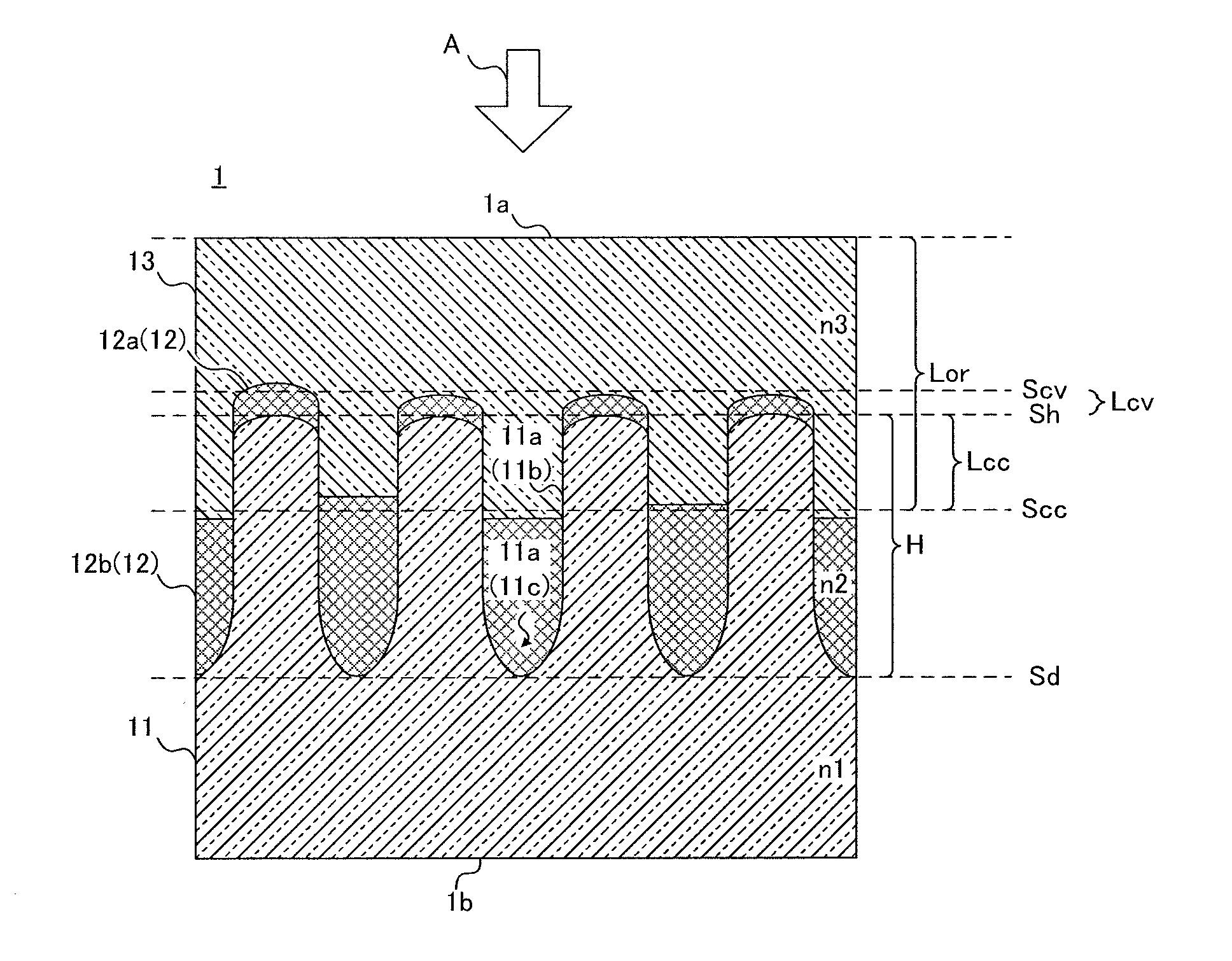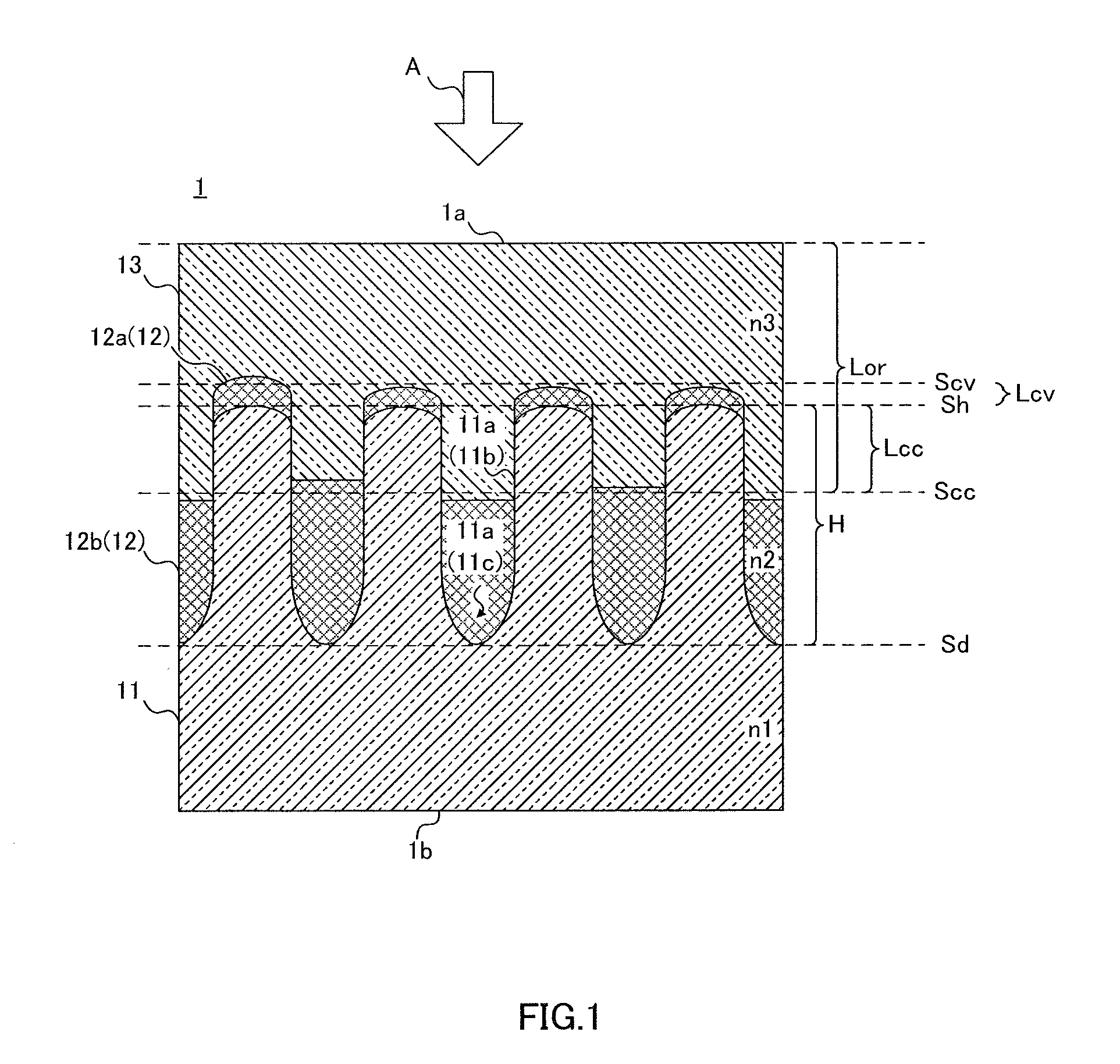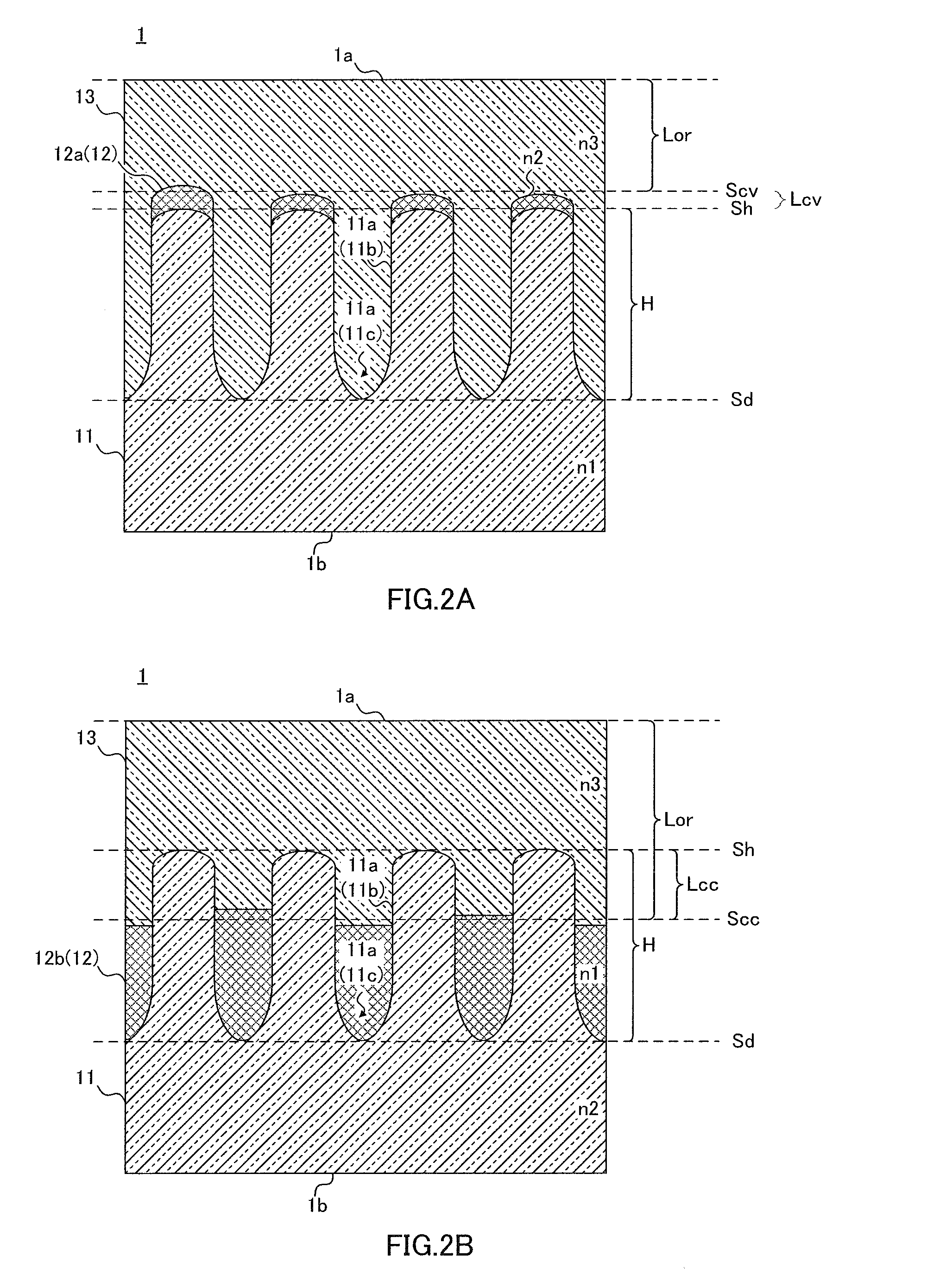Light extraction product for semiconductor light emitting device and light emitting device
a technology of light emitting device and light emitting device, which is applied in the direction of lighting and heating apparatus, instruments, paper/cardboard containers, etc., can solve the problems of not being able to break the total reflection of light in the interface between the high refractive index region and the light extraction efficiency is significantly reduced, and it is not possible to extract light to the outside. , to achieve the effect of reducing color shift and glare in emitted light, improving light extraction efficiency of semiconductor ligh
- Summary
- Abstract
- Description
- Claims
- Application Information
AI Technical Summary
Benefits of technology
Problems solved by technology
Method used
Image
Examples
embodiment 1
[0275]FIGS. 7 and 8 are schematic diagrams illustrating the first concavo-convex structure according to Embodiment 1. FIG. 7 is a perspective diagram illustrating a concavo-convex structure layer 101, and FIG. 8 is a top diagram of the concavo-convex structure layer shown in FIG. 7.
[0276]As shown in FIG. 7, a first concavo-convex structure 101a includes a plurality of independent convex portions 101b protruding upward in the perpendicular direction to one main surface S of the concavo-convex structure layer 101. The plurality of convex portions 101b are disposed at predetermined intervals. Portions between mutually adjacent convex portions 101b are continuously connected by a concave portion 101c dented downward in the perpendicular direction to one main surface S of the concavo-convex structure layer 101.
[0277]In the first concavo-convex structure layer 101a, the shape of the plurality of convex portions 101b is a pillar-shaped body (cone-shaped body), and the concave portion 101c ...
embodiment 2
[0286]FIGS. 9 and 10 are schematic diagrams illustrating the second concavo-convex structure according to Embodiment 2. FIG. 9 is a perspective diagram illustrating a concavo-convex structure layer 111, and FIG. 10 is a top diagram of the concavo-convex structure layer 111 shown in FIG. 9.
[0287]As shown in FIG. 9, a second concavo-convex structure 111a includes a plurality of concave portions 111b dented downward in the perpendicular direction to one main surface side of the concavo-convex structure layer 111. The plurality of concave portions 111b are mutually independent and are disposed at predetermined intervals. One main surface of the concavo-convex structure layer 111 is left between mutually adjacent concave portions 111b, and forms convex portions 111c. The convex portions 111c may be mutually continuous or may be independent.
[0288]The structure includes a plurality of mutually independent concave portions 111b and convex portions 111c provided to surround the plurality of ...
embodiment 3
[0297]FIG. 11 is a schematic diagram illustrating a third concavo-convex structure according to Embodiment 3. In addition, FIG. 11 schematically shows a state in which a concavo-convex structure layer 121 is viewed from the upper surface.
[0298]As shown in FIG. 11, a third concavo-convex structure 121a includes a plurality of mutually parallel palisade bodies (convex portions) 121b extending along the first direction D1 belonging to the inside of the main surface of the concavo-convex structure layer 121. Each palisade body 121b is provided to protrude perpendicularly upward from the main surface of the concavo-convex structure layer 121, and has a predetermined thickness (width) in the second direction D2 orthogonal to the first direction D1. Further, one main surface of the concavo-convex structure layer 121 is left between respective palisade bodies 121b, and forms concave portions 121c provided between respective palisade bodies 121b.
[0299]In other words, in the case where the l...
PUM
| Property | Measurement | Unit |
|---|---|---|
| refractive index | aaaaa | aaaaa |
| diameter | aaaaa | aaaaa |
| diameter | aaaaa | aaaaa |
Abstract
Description
Claims
Application Information
 Login to View More
Login to View More - R&D
- Intellectual Property
- Life Sciences
- Materials
- Tech Scout
- Unparalleled Data Quality
- Higher Quality Content
- 60% Fewer Hallucinations
Browse by: Latest US Patents, China's latest patents, Technical Efficacy Thesaurus, Application Domain, Technology Topic, Popular Technical Reports.
© 2025 PatSnap. All rights reserved.Legal|Privacy policy|Modern Slavery Act Transparency Statement|Sitemap|About US| Contact US: help@patsnap.com



